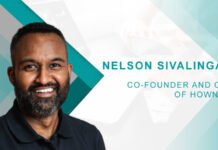1. Tell us about your role in Pearson?
As part of my current role at Pearson India, I am responsible for the talent strategy in the dynamic Indian market. Currently I am leading a team towards developing frameworks to leverage the power of working in a matrix and driving strong ownership of the business while bringing in the expertise of the different functions. I am also handling product/process capability, performance improvement program, management policies and approaches. My role is more of an influencer, be it influencing employees to adapt to changing environment, structure or interpersonal skills.
2. Can you tell us about your journey into this market?
I started my journey as a role in consumer science and research. At one point I have been an internal customer for HR. This fraternity welcomes people from various backgrounds. I have a total experience of close to two decades in executive coaching and leadership development, talent assessment, process designing and implementation, performance management, employee engagement and succession planning. During my previous roles at Fullerton, Infosys and Hindustan Lever Limited (now HUL), I handled talent acquisition and attrition, career planning and training, behavioural training programmes for staff, managed employee life cycles, developed and delivered employee engagement initiatives and recruitment and selection in multiple capacities.
3. How do you think technology is changing the Education Sector?
We are living in an era where the potential of technology is limitless and can be utilized to boost the efficacy, effectiveness and efficiency of education. With the emerging technologies in education changing the perception of learning, it is bringing a measurable difference in students’ engagement and performance.
Technology can be both a tool and a catalyst for change.
It all started with educators showing videos and now we are talking about experience through VR learning. It was a well-known fact that number of sensorial organs used while learning will enhance the process. Earlier it used to be mostly auditory and some visual. However, VR now gives s scope of including sense of space (Kinesthetic learning), some sense of touch and feel.
The emerging use of augmented and virtual reality (AR/VR) is creating immersive learning experience for learners. Through AR, educators can add experience to learning through “Show and Tell” rather than a traditional textbook approach. Additionally, with the increasing role of technology students can learn anytime from anywhere as learning is no longer limited to the four walls of a classroom.
Technology is even helping teachers to expand beyond linear, text-based learning and to engage students who learn best in other ways. Its role in schools has evolved from a contained “computer class” into a versatile learning tool that could change how we demonstrate concepts, assign projects and assess progress.
We at Pearson understand the art of collaborating technology in education to bring new dimension to the education space. We introduced MyPedia, a fully-integrated learning programme in K-12 segment that promises measurable improvement in cognitive skills of the learner.
4. Do you think Education management plays an important role in the education system of a country? Do you agree that it has started gaining focus now?
Education management plays a crucial role in transforming and developing the education sector in our country. From ‘black board’ to ‘digital board’, government’s ICT-enabled learning transformation initiative is bringing a technological revolution to accentuate e-Learning in India which will lead to major shift in the Indian education sector.
The Digital India campaign by the government is another promising opportunity to revitalize our education system. It must holistically integrate technology to achieve desired educational outcomes – improving learning outcomes, building capacity of teachers and improving accountability to create job-ready professionals.
5. How do you think Pearson has contributed to the development of the Education Management System?
With an approach to transform the classroom learning and foster concept-based learning vis-a-vis rote learning, we developed MyPedia, a fully-integrated programme for the K-12 segment. It brings together various teaching and learning tools such as course books, worksheets, in class digital videos, assessments and lesson plans supported by robust technology. MyPedia serves as a tool to evaluate each student’s performance and bring significant improvement in the cognitive skills of students. It also bridges the gap between teachers, students, school leaders and parents by catering to them both in the classroom and at home.
It follows 5i model of the learning process – Inception, Ideation, Inculcation, Inscription, and Inquisition. The model is aligned with the learning cycle advocated for inquiry-based learning in classrooms. Supported by a mobile application that can be downloaded on any android mobile phone, the ‘Home App’ of MyPedia helps children access classroom content in the comfort of their home. Parents can access digital resources, reports on daily assessment and monitor the school progress of their children.
6. “E-learning is the future of Education”. What are your views about this?
The rapid increase in internet penetration in the last few years has been an important catalyst for the growth of e-learning in India. The advancement in technology and easy accessibility of internet has opened a brighter side of e-learning in India. KPMG estimates, size of India’s e-learning market was $247 million, comprising 1.6 million users in 2016 and expects it to grow six times to 9.6 million users by 2021.
E-learning brings unique advantages, the most prominent being the ability for online instructors to provide personalized attention to all students. Technology has further enriched the learning experience for students as digital learning can deliver education and employability solutions in a friendly, cost effective and convenient manner.
Cashing in on the potential, investment in e-learning is key to strengthen the learning ecosystem in India. The developing wave of adaptive learning will also help students glean the best from the learning process at their own pace, without feeling left out.
7. What advice would like to give to the upcoming HRtech StartUps?
Technological innovations in the field of big data analytics, machine learning, artificial intelligence (AI) etc is already making an impact on the various industries including HR. I would suggest, while developing HR technology, ensure that employees benefit from it equally as the HR Professionals. We are in the era where attention span is low, so keep the SOPs & manuals brief, develop systems and services that are quick.
Apart from Talent Management and Recruitment, ensure that there is an interactive portal for personal development. Additionally, develop networking platforms the can help both the existing & prospective employees to understand the key developments at the organization. Integrating mobile applications with HR software for easy access and using analytics to predict changes can be beneficial as well.
8. What technology according to you will leave its mark in 2019?
Over the last few years, Artificial Intelligence has been bringing transformation across sectors, even more so for education. Education experts are increasingly leveraging AI to develop new learning models for creating wider, better opportunities for students. Artificial Intelligence and machine learning will play a crucial role in developing education technology (ed-tech) take personalized learning to a whole new level.
9. What is the vision, on which you and Pearson are working on?
With digitisation and automation discussed across various sectors, it becomes essential for all companies today to equip their workforce with digital capabilities and future technologies. Globally and in India, Pearson is moving towards becoming a digital learning company and people are at the centre of what we do. Training, therefore, is critical and covers four key elements – Process, Tool & Systems, Culture and Knowledge skills & Behaviour.
Today, when education is embracing technology, the need of the hour is that our workforce has skills and capabilities in acknowledging the digital needs of our customers. We are looking at building capabilities across functions such as sales and leadership with focus on digital first approach and customer centricity.
In addition, we also have a robust training program in Leadership which is conducted across all levels to assist our people in delivering results, imbibing values and beliefs of the organisation and helping people get the right roles basis their skills and talent.
10. What are the major developments you are planning, in recent times?
There are 2 immediate goals (a) Ensure that we can analyse a couple of programs for efficacy – We will analyse and evaluate the impact of our L&D investment and the learning experience we provide, to gain insight on how well we are delivering the capability we need and the engaging our people, so that we remain a leader in our field and (b) follow the 70, 20, 10 principle – The most effective balance of learning is through 70% on the job, 20% learning from others, including mentoring & coaching and 10% structured learning.
This maximises learning opportunities, embeds learning in the workplace, and engages our leaders and managers in building capability in our people. We have a culture of learning at Pearson. It will be utterly inclusive and everyone in the company will be expected to access learning to help them realise their own potential; to grow not just professionally, but also personally. We’ll become famous for it, and as a result will be able to attract and retain the very best talent.
11. Can you tell us about your team and how it supports you?
At Pearson, we believe in building a healthy organization, by expanding our diversity and inclusion efforts, improving Organizational Health and enabling more employees to contribute to innovation and growth initiatives. Our efforts in engaging our people is to align their goals and interests with the vision and goals of Pearson India.
12. Which Book are you reading these days?
I read a minimum of 3 books at a time. Currently I am reading
- Story of Civilization – Age of Voltaire by Will Durant, Ariel Durant
- What we talk about when we talk about rape by Sohaila Abdulali
- Heads you win by Jeffery Archer
13. Can you give us a glance of the applications you use on your phone?
Currently I am using the following applications:
- Pearson Work related – Alt Worklife, MyPedia, Saba Cloud, Jive Daily, Lynda, Serko, Person Employee Authenticator
- HR Related – LinkedIn elevate, iAppreciate, Draft, Libby, Google Drive
- Travel related – Transit, iTranslate Converse, Uber, Ola cabs
- Fitness – Fitbit, Curefit
- Social Media – FB, Twitter, Skype, Hangout, Inshorts, whatsapp
- ICICI Bank, Paytm
- Justwatch, YouTube, Airtime Player
- Swiggy, Zomato, Freshmenu

Ritu Agast Director of Human Resource, Pearson India
Ritu Agast is a director of human resource at Pearson India. She is responsible for the talent strategy in the dynamic Indian market. She also handles product/process capability, performance improvement program, management policies and approaches. She started her journey as a role in consumer science and research. During her previous roles at Fullerton, Infosys and Hindustan Lever Limited (now HUL), she handled talent acquisition and attrition, career planning and training, behavioral training programs for staff, managed employee life cycles, developed and delivered employee engagement initiatives and recruitment and selection in multiple capacities.












